Italy is one of the most well-known European countries, nestled right in the heart of the continent. It is impossible to remain indifferent to its natural stunning beauty, its rich and palpable culture and a cuisine that enchants everyone’s taste buds. Italy also embraces the finer things in life. It is the birthplace of opera, fashion and - we dare to say - of romance as well. A magical place in all its splendour.
But is it possible for a place this famous to be able to keep secrets? That is what you are going to find out!
Italy is one of the most recent countries in Europe
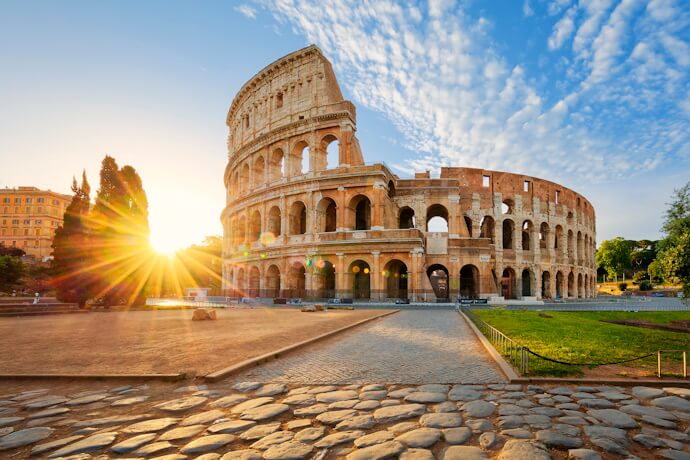
Yes, you read that correctly. Italy is commonly known as a very old country, since its history spans over 2,500 years, with the start of the powerful Roman Empire. Ancient Rome was founded in the 8th century BC and laid the foundation for Western civilization, with its advanced knowledge on law, engineering, architecture and governance systems. Overtime, it extended its influence across much of Europe, North Africa and the Middle East.
However, Rome's decline began in the 3rd century AD due to internal conflicts, invasions and economic challenges and had its fall in 476 AD. After centuries and centuries of fragmentation and invasions by numerous Germanic tribes, the unification of Italy, known as the Risorgimento, slowly started in the 19th century as a response to foreign domination and a desire for national unity.
The Kingdom of Italy was officially proclaimed in 1861 with Turin as its capital. However, the unification process was not complete until 1870 when Rome, previously under the control of the Papal States, became the capital. The Papal States were incorporated into the new Italian state, leading to the establishment of the modern-day Italian Republic.
This history lesson aims to show that this beloved country has undergone various changes and has succeeded, and now has a whole Roman legacy that you can see with your own eyes through its magnificent architectural wonders, such as the Colosseum and the Roman Forum in Rome.
Italy is the fifth most visited country in the world
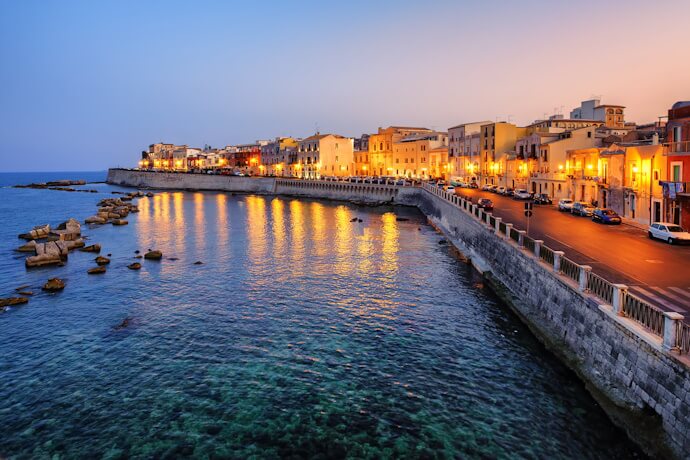
Italy's popularity as a tourist destination is undeniable, as it consistently ranks among the top countries in terms of visitor arrivals. In 2022, around 52.4 million tourists explored all the Italian nooks and crannies, giving special attention to Rome.
It currently holds the position of the fifth most visited country in the world and it is almost impossible to pinpoint a specific reason that explains Italy's immense appeal to travelers - from an abundance of historical and cultural treasures to its culinary delights, this country portrays the ideal love tale that people from all corners of the globe aspire to experience.
It is the only country in the world with over 50 UNESCO sites

This may be yet another reason that explains the subject mentioned above. Italy is home to a remarkable number of UNESCO World Heritage sites, which reflects its outstanding universal value. The country boasts a total of 58 UNESCO sites, making it the country with the most World Heritage sites in the world. These sites encompass a wide range of categories, including archaeological sites, historic cities, architectural marvels, natural landscapes and cultural traditions.
We prepared a short list with a few of the most renowned sites:
Historic Centre of Rome: The capital has many iconic landmarks such as the Colosseum, the Roman Forum and the Pantheon. It represents the remains of ancient Rome and the heart of the Catholic Church.
Venice and its Lagoon: Known for its unique network of canals, palaces and churches, Venice is the perfect example of a city built on water. The historic center of Venice and its lagoon are recognized as an extraordinary architectural and cultural ensemble.
Historic Centre of Florence: Florence, being the birthplace of the Renaissance, is renowned for its exceptional artistic and architectural heritage. The site includes landmarks like the Duomo, the Uffizi Gallery and the Pitti Palace, showcasing masterpieces by artists like Michelangelo, Botticelli and Brunelleschi.
As you may imagine, there are plenty more UNESCO sites and just jaw-dropping places in Italy. Culture and natural beauty are Italy’s strongest suits. From the rugged cliffs and turquoise waters of the Amalfi Coast to the quaint vineyards of Tuscany and the breathtaking lakes of Como and Garda, Italy offers a stunning array of scenery. The Dolomites in the north, with their majestic peaks, attract outdoor enthusiasts, while the pristine beaches of Sardinia and Sicily welcome sun-seekers.
It encapsulates two other countries, one of them the smallest in the world

This legendary boot-shaped territory is not 100% Italian, as it incorporates San Marino and the Vatican, the smallest country in the world.
San Marino is an independent microstate located on the northeastern side of the Italian Peninsula, near the Adriatic Sea. It is one of the world's oldest republics, with a history dating back to the year 301 AD.
San Marino attracts visitors with its rich history, scenic views and cultural charm. The country's economy relies heavily on tourism, offering an abundance of cultural attractions such as a wealth of museums, palaces, and a vibrant atmosphere. Be sure to include a detour to San Marino during your stay in Italy!
The Vatican is even easier to reach if you are staying in Rome. You can just walk there! It is a 15-minute stroll from the Sant’Angelo Castle to the Saint Peter’s Square, the main Vatican square.
Officially known as the Vatican City State, it has been independent since 1929, located within Rome. It is the spiritual and administrative headquarters of the Roman Catholic Church and the residence of the Pope.
The Vatican is considered to be the smallest country in the world, with an area of 0.44 square kilometers, which is the equivalent to 110 acres, about one-eighth the size of New York's Central Park.
Should you still be unsure about your choice of summer destination, remember that in a trip to Italy you can visit three countries in one go!
Italy is home to one of the Blue Zones
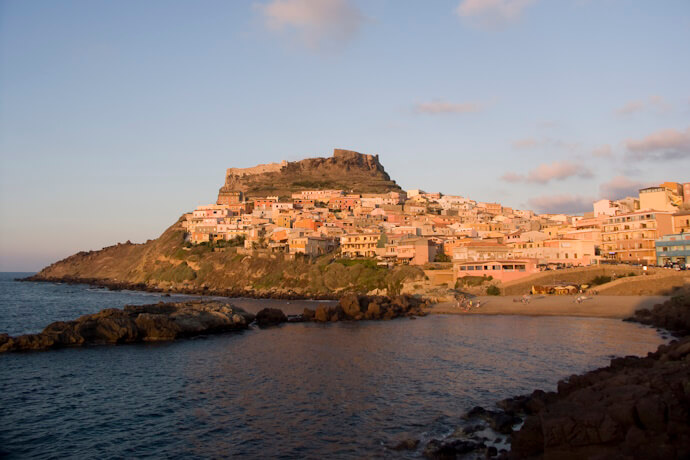
You may have heard of these so-called Blue Zones before. They are specific regions around the world where people tend to live longer and healthier lives compared to the global average. They represent paradise on earth, pretty much.
These areas have caught the eye of researchers and scientists studying longevity and factors contributing to a high quality of life. The term "Blue Zones" was created by the National Geographic journalist and explorer Dan Buettner after identifying these regions during his travels.
The Blue Zone in Italy refers to the island of Sardinia, a famous beach area where the residents live well into their 90s and beyond. It is believed that the locals’ traditional lifestyle with a plant-based diet rich in whole foods, physical activity through daily routines, strong family and social connections and a sense of purpose is the secret to a healthy centenary life.
Other examples of Blue Zones are Nicoya in Costa Rica and Ikaria in Greece, that follow similar daily routines, placing importance in a plant-based diet and regular physical exercise.
Italy is the largest wine producer in the world
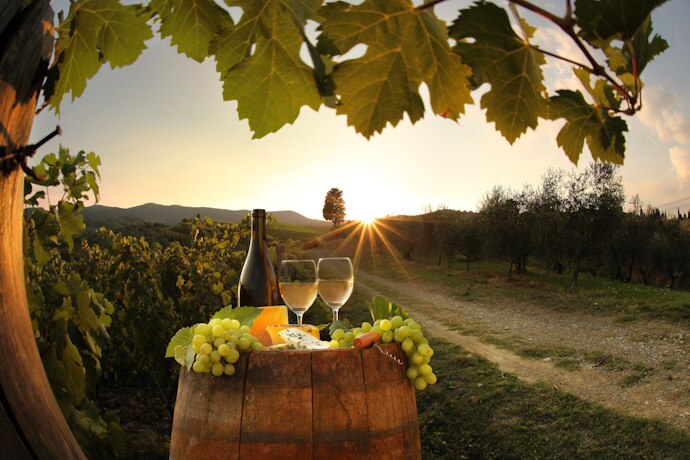
In 2022, Italy produced about 50 million hectolitres (5 billion liters) of wine, ranking it number one in winemaking across the globe, which was entirely expected, since the country has held this position for a few years now.
This is only possible thanks to the wide variety of high-quality vineyards and dedicated labour across the country. Each region has its own distinct climate, soil composition, grape varieties and winemaking traditions, resulting in unique flavours and characteristics. We have put together another short list with some notable Italian wine regions.
Located in the northwest, Piedmont is famous for its prestigious wines, including Barolo and Barbaresco, which are made from the Nebbiolo grape. Other outstanding wines from this region include Barbera, Dolcetto and Moscato d'Asti.
The second region is Tuscany, situated in central Italy, home to some of the country's most iconic wines. The region is renowned for producing Chianti, Brunello di Montalcino and Vino Nobile di Montepulciano, which are primarily made from the Sangiovese grape. Super Tuscans, a category of high-quality wines often blended with international grape varieties, are also highly regarded.
Veneto, located in northeastern Italy, stands out for its diverse range of wines. The region produces Prosecco, a popular sparkling wine, as well as Amarone della Valpolicella, a full-bodied red made from dried grapes. Other notable wines include Soave, Valpolicella and Bardolino.
Italy's largest island, Sicily, has a long history of winemaking as well. The region benefits from a Mediterranean climate, producing a wide array of wines, both red and white. Notable Sicilian wines include Nero d'Avola, a robust red, and Marsala, a fortified wine.
These are just a few examples of the many regions that have turned Italy into a true paradise for wine lovers.
An Italian consumes an average of 25kg of pasta per year (a tradition with roots stretching back to ancient Rome)
.jpg?width=690&height=460&name=An%20Italian%20consumes%20an%20average%20of%2025kg%20of%20pasta%20per%20year%20(and%20they%20have%20been%20eating%20pasta%20since%204BC).jpg)
As we mentioned before, it is widely known that Italian gastronomy is one of the world's most delectable cuisines. The country's culinary delights range from mouthwatering pizzas and pastas to delicious gelato and exquisite wines.
Even though pasta is available in most places nowadays, we believe that in Italy it has a special touch, and Italians definitely have a strong affinity for pasta, which explains their average consumption of 25 kilograms (or 55 pounds) of pasta per person per year. In the US the estimated amount of pasta consumed per person per year is about 7 kilograms (or 15.5 pounds), so this Italian affinity for pasta might be an addiction!
In terms of historical consumption, the exact origin of pasta is debatable, although it is true that pasta has a long history in Italy. The Etruscans, an ancient Italian civilization, were known to have made pasta-like dishes, and the Romans popularized it over the years. The consumption of pasta continued through the centuries, evolving into the diverse pasta culture seen in Italy today.
Italy has the oldest university in the world

The University of Bologna holds the esteemed title of being the oldest university in the world still in activity. With a long and illustrious history spanning over nine centuries, this prestigious institution was a pioneer in the concept of higher learning and has played a role of utmost importance in shaping the academic landscape.
It was established in 1088, during the medieval period, a time when Europe was experiencing a renaissance in intellectual and cultural pursuits. The university was founded by a group of scholars who sought to create a center for advanced education, where knowledge could be exchanged and expanded.
The University of Bologna quickly attracted students from all across Europe and beyond. It became a hub of intellectual activity, fostering an environment of critical thinking, academic freedom and innovation. Notable figures such as Dante Alighieri, the renowned poet, and Copernicus, the astronomer, were among the many who graced the university's halls, leaving an enduring legacy.
Today, the University of Bologna stands as a prestigious institution renowned for its academic rigor and scholarly contributions and remains a symbol of intellectual pursuit and a testament to the long-lasting power of education.
Italy has three active volcanoes
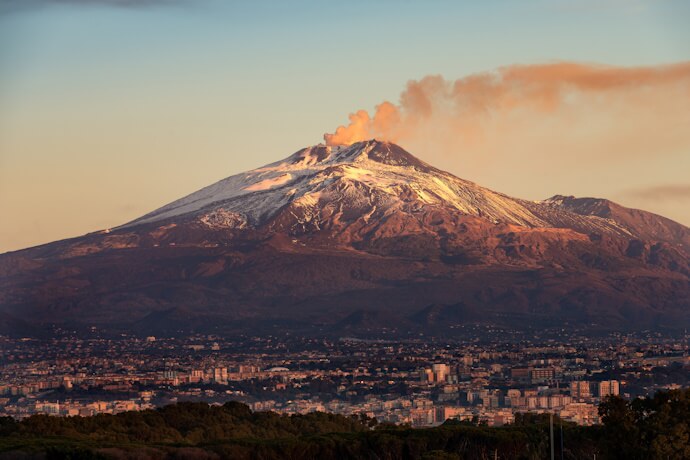
Italy's natural landscape would be incomplete without reference to its volcanic activity, with several active and dormant volcanoes dotting its scenery. These volcanoes have shaped the geography of the country and hold great geological and historical significance.
The first that comes to mind is Mount Etna, one of the world's most active volcanoes, located on the eastern coast of Sicily. It stands as the tallest active volcano in Europe, with its summit reaching approximately 3,300 meters (10,900 feet) above sea level. Etna's frequent eruptions, characterized by lava flows and occasional explosive activity, have shaped the surrounding areas and attracted scientific research and tourism.
The Stromboli volcano is located on the Aeolian Islands in the Tyrrhenian Sea, known as the "Lighthouse of the Mediterranean" due to its almost constant mild explosive activity. This volcano is unique because it exhibits Strombolian eruptions, characterized by regular bursts of gas, ashes and incandescent lava fragments. Visitors can witness the fiery displays from a safe distance and explore the island's rugged beauty.
Last but definitely not least, you have Mount Vesuvius, situated near the city of Naples in southern Italy. Vesuvius is infamous for its catastrophic eruption in 79 AD that buried the cities of Pompeii and Herculaneum. It also erupted quite recently, in 1944, which makes it the only volcano on Europe’s mainland to erupt in the last hundred years. It is considered one of the most dangerous volcanoes in the world due to its proximity to heavily populated areas. Even though it is currently dormant, Vesuvius remains an active volcano and is closely monitored for any signs of reawakening.
These volcanoes highlight Italy's dynamic geological environment and provide opportunities for scientific research, geotourism and the study of volcanic hazards. While they carry risks, their presence has also shaped the landscapes, soils and cultural heritage of the surrounding regions, making them fascinating and significant features of Italy's natural history.
Italy has unique superstitions

Something that most people are unaware of is that Italy has a whole mysterious and mythical side to it! It is even considered by many as the most superstitious country in Europe, as Italians will have many tricks up their sleeves in order to keep bad spirits away.
One of the most common rituals is dropping olive oil into a bowl of water to check for Malocchio (The Evil Eye). The Malocchio is an urban legend that is deep-rooted in Italian culture, which started as far back as the ancient Romans and Greeks. The belief is that, when a person feels negative energy around them, they can use this ritual to change their luck.
Spilling salt is also considered unlucky in Italy. To counteract the bad luck, you must throw a pinch of salt over your left shoulder with your right hand. Be careful with your manners at the table!
On New Year’s Eve, you will always witness some sort of ritual or spell casting no matter where you go. In Italy, as soon as the clock hits midnight, be prepared to see old clothes and objects flying out the windows, as it symbolizes letting go of the past and welcoming the new year. It is also believed that wearing red underwear brings good luck and fertility, but we will leave that up to you.
When you are planning your trip to Italy, beware of any Friday the 17th. That is the Italian “version” of an unlucky day. This superstition stems from the fact that the Roman numeral for 17, XVII, can be rearranged to spell "VIXI," which translates to "I have lived" in Latin and is associated with death.
On a more positive note, Italy's allure lies in its seamless blend of ancient history, timeless art, picturesque landscapes and vibrant culture. But it is more than that – it is a way of life. The Italians' passion for art, music and enjoying the simple pleasures of life is infectious and continues to captivate people’s imagination worldwide. That is how Italy remains a cherished destination for those seeking to experience la dolce vita - the sweet life.



